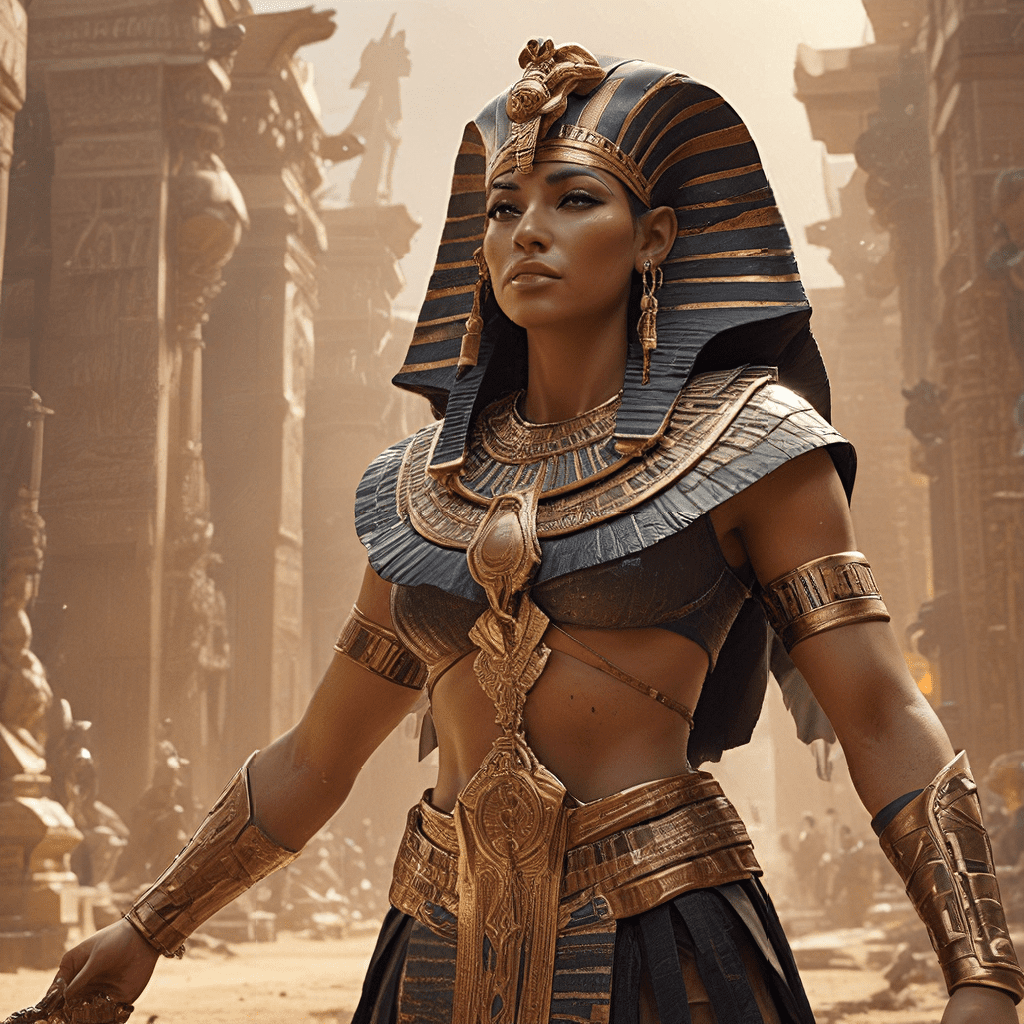The Gods of War: Examining the Role of Violence in Egyptian Mythology
1. Introduction: A Violent Landscape
The Nile Valley, a fertile cradle of ancient civilization, was also a land of constant war and conflict. From skirmishes between rival city-states to the grand battles of mighty empires, violence permeated the lives of the ancient Egyptians. This violent reality found its reflection in Egyptian mythology, a rich tapestry of stories, beliefs, and deities that offer a unique window into the hearts and minds of these ancient people. Examining the role of violence in Egyptian mythology reveals profound insights into their cultural anxieties, values, and worldview. It provides a glimpse into the way they understood and navigated the turbulent world around them.
2. The Divine Warriors: Guardians and Conquerors
The Egyptian pantheon, the celestial assembly of gods and goddesses, was populated by a host of divine warriors who embodied different aspects of conflict and combat. These divine beings served not only as powerful protectors but also as mirrors reflecting the Egyptians’ own aspirations for strength, resilience, and dominion.
**Horus**, the falcon-headed god, epitomized divine kingship and was depicted as a powerful warrior protecting Egypt from its enemies. His mythical battle against his uncle, **Seth**, the god of chaos and storms, symbolizes the eternal struggle between order and disorder, good and evil.
**Seth**, a formidable adversary of Horus, was often depicted as a ferocious beast, representing the forces of darkness, storms, and violence. His association with chaos made him a fearsome figure, embodying the unpredictable nature of the world and the constant threat of instability.
A powerful protector of the underworld, **Anubis**, the jackal god, was responsible for guiding the deceased through the perilous journey to the afterlife. His role involved weighing the hearts of the dead against the feather of Ma’at, the goddess of truth and justice, and determining their fate in the afterlife. This process involved rigorous judgment, reflecting the Egyptian belief in divine retribution for wrongdoing.
3. The Cycle of Violence: From Creation to Destruction
Egyptian creation myths, the stories explaining the origins of the world and the cosmos, often depicted violence as an integral part of the cosmic order. This might seem surprising, but it reflects a view of the world where order and chaos are inextricably intertwined.
One of the most prominent examples is the **myth of Ra and Apophis**, where the sun god Ra, the life-giving force of the universe, is perpetually battling Apophis, the serpent of chaos, who seeks to engulf the world in darkness. This ongoing struggle, depicted as a daily cosmic battle, symbolizes the constant tension between order and disorder, light and darkness, and the need for eternal vigilance against the forces of destruction.
Violence in Egyptian mythology was not presented solely as a negative force but as a necessary element in maintaining balance and justice within the cosmos. It was a means of establishing order and ensuring the triumph of good over evil.
4. The Role of Warfare in Egyptian Society
Ancient Egypt, like most civilizations throughout history, experienced its share of conflict. Warfare played a crucial role in securing resources, expanding territories, and ensuring the survival of the nation. The Egyptian pharaohs, considered divine kings, were responsible for leading their armies in battle and safeguarding their people. Their success was often attributed to the favor of the gods of war, who were invoked for victory and protection.
Egyptian art and literature often glorifies war and its heroes, showcasing the values of strength, courage, and loyalty. These depictions, ranging from majestic tombs adorned with battle scenes to epic tales of heroic warriors, reveal the importance of military prowess in Egyptian society and underscore the connection between warfare and divine favor.
5. The Divine Punishment: Retribution and Justice
Violence in Egyptian mythology was not only associated with warfare and cosmic order; it also served as a form of divine punishment for transgressions. This belief in divine retribution was a powerful force in maintaining social order and discouraging wrongdoing.
The **myth of Osiris and Seth**, one of the most famous Egyptian myths, illustrates the consequences of evil deeds. Osiris, the god of the underworld, was brutally murdered by his envious brother, Seth, who usurped his throne. Osiris’s death sparked a cosmic upheaval, leading to the establishment of the underworld and the judgment of the dead. Seth, as the embodiment of chaos and violence, was ultimately punished for his actions, highlighting the eternal consequences of evil.
This myth, along with many others in the Egyptian pantheon, reinforces the notion that violence, when used for selfish or destructive purposes, ultimately leads to chaos and retribution. It also emphasizes the Egyptian view of justice, where divine intervention is crucial in upholding order and ensuring that the guilty are held accountable.




